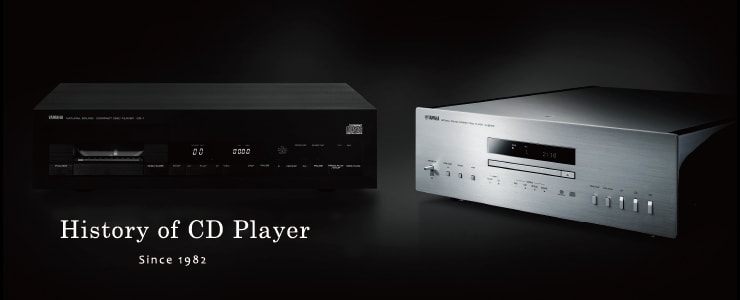Yamaha lanzó su primer reproductor de CD en 1982, justo después del nacimiento del CD. Sus características innovadoras incluyeron un mecanismo de unidad de carga de disco deslizante en vez de controles frontales de tipo bandeja, un espejo que le permite ver el lado grabado del disco giratorio y un gráfico de barras LED que mostraba la posición aproximada de la unidad. recoger. Para una época familiar sólo con el registro analógico, fue probablemente una suposición natural de que el disco y la recogida estaban destinados a ser visto durante el juego. Las opciones para un dispositivo principal eran todavía limitadas, pero esta unidad enfatizó directamente la "diferencia sónica" Con conversores D / A lineales de 16 bits y fuentes de alimentación separadas para los elementos digitales y analógicos, y reivindicó la singularidad técnica con un IC personalizado desarrollado internamente en el corazón de su sistema de control. Más de 30 años, más tarde la atención a cada detalle y estilo limpio de la estética Yamaha no han perdido su lustre.
History of Lector CD
Historia de los reproductores de CD Yamaha (desde 1982)
Avanzado procesamiento digital con tecnología LSI. Desarrollo y fabricación propios y tratamiento del sonido con el enfoque de un fabricante de instrumentos musicales. En los años 1980 y 1990, cuando el CD estaba en pleno apogeo, los reproductores de CD Yamaha lideraban el mercado manteniéndose fieles a la esencia de la reproducción de audio y sirvieron de inspiración para muchos de los modelos que más se conocen y recuerdan en la actualidad.
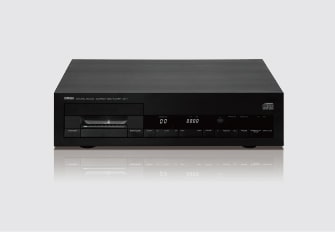
1982
Primer reproductor de CD de Yamaha, diseñado con nuestro particular sentido del sonido y la estética.
CD-1
abrir
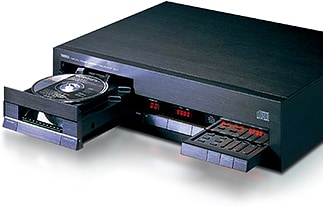
cerrar
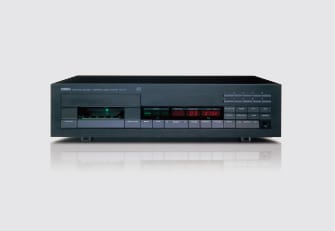
1983
Primer reproductor de CD de Yamaha, diseñado con nuestro particular sentido del sonido y la estética."
CD-1a
abrir
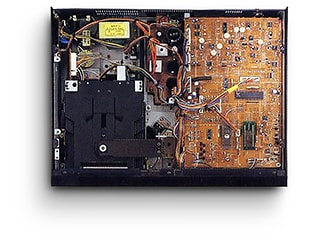
The CD-1a was introduced in 1983 as an upgraded version of the CD-1. Maintaining all the good points of the CD-1 that had earned it such a good reputation, its degree of perfection was raised with improved stability and reliability of operation, common problems for manufacturers of the earliest Lector CDs. In terms of sound quality, the DAC device and low-pass filter (still a high grade analog filter rather than a digital filter at the time) were reworked, delivering Yamaha’s characteristic richly musical expressiveness and helping to change people’s preconceptions that "CD sound has no personality." In terms of its functions, the electric opener’s key tray and sub-display for memory play usage, major features of the original CD-1, had been removed, and in response to the demands of the market the new unit now featured 10 keys, a headphone jack and a new look for the display panel. Lasting only one year, the original CD-1 was short-lived, but with CD still in its early stages of development this shows that both manufacturers and consumers were still struggling with the new technology. Nevertheless the CD-1a became a long-selling item, Yamaha’s flagship product for three years.
cerrar
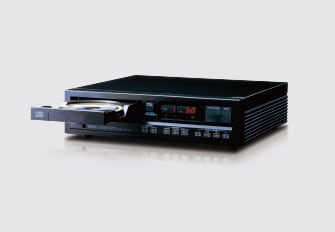
1983
Nuestro reproductor de CD original mejor vendido que superó por primera vez la barrera de los 100.000 yenes.
CD-X1
abrir
After initially generating tremendous expectations, the CD went into a slump once the first wave of demand had passed. The main reason was that the hardware and software were still expensive. The first Lector CD to sell for under 100,000 yen, a major benchmark on the road to full-scale commercial acceptance, was the CD-X1, introduced in 1983 for 99,800 yen. The CD-X1 featured two original LSIs developed and manufactured in-house, significantly reducing the total number of parts in the player to about one-third the conventional amount and becoming Yamaha’s trump card in offering the lowest price in the industry. One of the LSIs was the YM3511 for servo-control, and the other was the YM2201 for digital signal demodulation and processing. With one-chip digital filtering and up to two times oversampling, the latter in particular achieved better sound quality and reliability while simultaneously reducing the cost. The linear 16-bit DAC device became Yamaha’s first ladder type (single). Apart from the mini-component body size and omission of a 10-key pad it was functionally comparable to a high-end model and contributed heavily to the explosive popularity and market expansion of the CD.
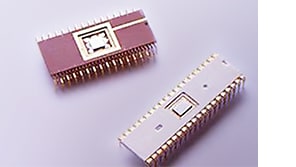
cerrar
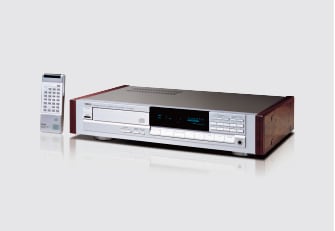
1985
Una unidad de gama alta de segunda generación que empleaba nuestro exclusivo método VMA para centrarse en las vibraciones mecánicas durante la reproducción de CD.
CD-2000/CD-2000W
abrir
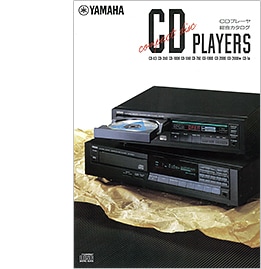
This was a high grade unit that was the first to incorporate Yamaha’s two original LSIs and played a major role in the development of the high performance, low cost Lector CD. Standardizing the basic platform with a focus on the control system, this model led to the establishment of a rational approach to further raising the design quality of high end Lector CDs. In addition to the VM Stabilizer, a copper-plated steel plate attached to the back of the audio board and developed based on the VMA vibration modulation analysis method to determine the effects of vibrations during CD playback on sound quality, its features like a double bottom structure and cast iron heavy insulator gave it a high frame rigidity that helped produce a clear sound image and massive bass. It also featured a powerful power supply unit with even lower impedance and variable output allowing remote control operation, and electric analog volume control with direct connection to the power amplifier. With the linear 16-bit single DAC device, the independent left and right digital filters had an irregular configuration. This model was produced in two styles, the CD-2000 with black panels and the CD-2000W with silver side wood panels.
cerrar

1986
Equipada con el primer sistema de conversión D/A de 18 bits de alta precisión del mundo, esta unidad inició la carrera de bits.
CDX-2200
abrir
Introduced for the first time, High Bit Digital achieved a total of 16x resolution through a combination of the 18-bit 4x oversampling High Bit Digital Filter and 18-bit Operation D/A Convertor offering 18-bit operation with floating point processing by 16-bit DAC. Taking advantage of this resolution with 0.4dB steps and 120dB pure digital volume dynamic range, it was a highly realistic and simple system with direct connection to the power amplifier. Commercialization of the world’s first Lector CD with more than 16-bit precision was the result of Yamaha’s in-house development and manufacturing of all digital processing LSIs including the digital filter, and this model sparked the later high-bit arms race that saw competing multi-bit DAC specifications throughout the audio industry. While high-bit dramatically improved the sound clarity of minute level signals, it was also susceptible to disturbances like digital noise and mechanical vibrations. Great progress was made in this area by the use of radiation and resonance countermeasures including a separate sheet design to make the separate analog/digital power supplies and circuit stages fully independent, a high rigidity chassis with thick aluminum top cover and double bottom, and a floating mount CD mechanism. As a result the new unit weighed 15kg, nearly double that of the previous CD-2000 model.
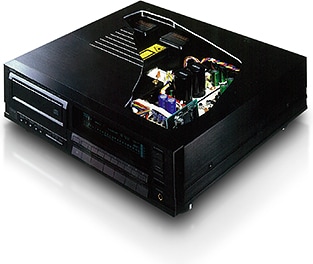
cerrar
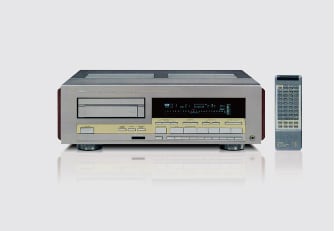
1987
Una edición especial, lanzada para el 100 aniversario de la fundación de Yamaha, que combinaba todas las ventajas de varios modelos en una sola unidad.
CDX-10000
abrir
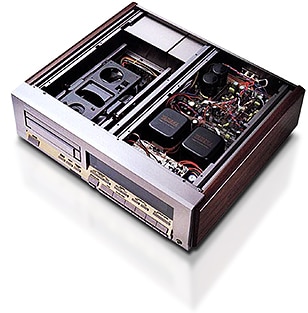
The CDX-10000 was released in 1987 as part of the Monumental Products Yamaha 10000 Series to commemorate the 100th anniversary of Yamaha’s founding. Forming a four-part system together with the MX-10000 Power Amplifier, the CX-10000 Control Amplifier and the HX-10000 Phono Equalizer, it was intended to handle the demands of all media past, present and future. An exclusive product with all-new design, the circuit configuration was based on the era’s latest High Bit Digital (18-bit operation 4x oversampling digital filter + floating point processing 18-bit operation D/A conversion) also used in the CDX-2200, with a low-pass filter combining a fifth-order new active filter and complete DC coupling, and a new CD mechanism featuring a thick broadcast studio-quality 4.5mm diameter motor spindle, a linear motor drive pickup with ultra-high speed 0.7-second access from innermost to outermost track, and four motors. The High Rigidity 2-Box Double Chassis housed the digital and analog components independently in separate compartments, bringing together the values of separate units in a single body. It employed a floating structure using elastic mounts and dampers, and the thorough cutoff of external vibration and absorption of internal vibration were in keeping with the trends of the day. The 10000 series was the origin of Yamaha’s characteristic titanium exterior body color still popular today.
cerrar
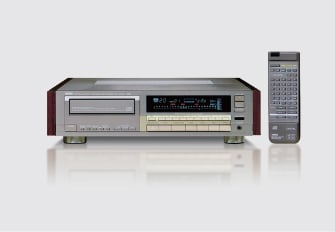
1987
Ofrecía una increíble relación señal-ruido de 118 dB gracias a un óctuple sobremuestreo.
CDX-2000
abrir
The CDX-2000 appeared in 1987 as an upgrade of the previously released CDX-2200, the first high-bit player. While the exterior appearance and basic design followed that of the CDX-2200, the operation key panel was colored gold and the front panel featured the titanium color of the 10000 series, and its presence was enhanced by the four-piece construction and large heavy insulator inherited from the CDX-10000. Its major claim to fame was the 8x oversampling of its digital filter, and together with digital/analog component separation by the current isolation method instead of the conventional photo-coupler system it achieved a 118dB S/N ratio, phenomenal for its time. Additionally, as a symbol of the glitch-free accuracy achieved by the D/A converter component, it was equipped with the new Pure DAC Direct Switch that output the DAC signal without passing through a low-pass filter, well-received by audio enthusiasts as a novel approach compared to the sound of the "original" DAC.
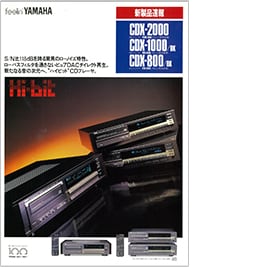
cerrar
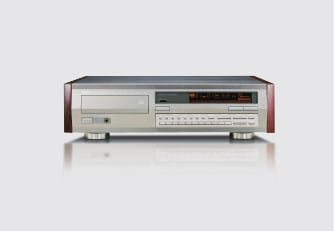
1988
Lo último en tecnología digital de alta velocidad, con un funcionamiento de 8 fs/22 bits y una configuración de cuatro DAC.
CDX-2020
abrir
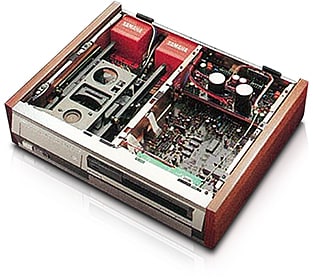
The so-called high-bit arms race that Yamaha initiated continued to escalate year by year, and the release of the CDX-2020 in 1988 saw the development of the New High-Bit System combining a 20-bit 8x oversampling digital filter and 22-bit operation four-DAC system. While conventional 18-bit systems had been turned into 18-bit via floating point processing by 16-bit DAC, this new 22-bit system featured a unique configuration with the latest 18-bit DAC supplemented with an external 4-bit DAC.
Because of this it was able to achieve high resolution of 8x in the time axis and 16x in the amplitude axis with a high S/N ratio reaching 120dB. The chassis was also redesigned, and the unit was replete with heavy equipment features reminiscent of the 10000 series, such as full copper plating in the body interior, spike/pad selection GP feet, a high rigidity mechanical unit equivalent to the CDX-10000, and a D/A separate power supply unit with a large two-transformer configuration. Looking back now it seems as though the high-bit arms race may have gone a bit too far, but the outcomes of light being shone upon the issue of micro-level reproducibility by high-bit and the accumulation in a short time of a knowledge base of how to deal with digital noise and mechanical vibrations undeniably live on as the assets not just of Yamaha but of the entire field of audio in Japan. The unique technology of the I-PDM 1-bit system of Yamaha’s next flagship model, the GT-CD1, couldn’t help but signal the next period of that generation’s high-bit systems.
cerrar
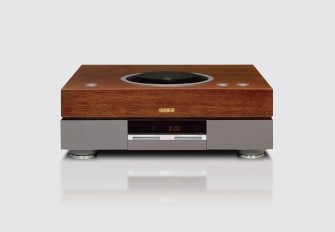
1991
Un reproductor de CD excepcional diseñado según el concepto GT, que volvía a los principios básicos del audio.
GT-CD1
abrir
The GT-CD1 featured accurate reproduction of micro-level signals and the realization of the high rigidity, non-resonant structure to support it. For ten years after the birth of the CD, Yamaha relentlessly pursued this theme before finally arriving at its ultimate answer, the GT Concept (Gigantic & Tremendous) in the GT-2000 analog player, which realized the idea of using the power of gravity to completely neutralize all vibration. The CD mechanism was made secure by mounting it on a 60mm-thick wooden player base housed in a 3kg circular casing carved from gunmetal casting, penetrating and grounded directly to the electronics unit suspended beneath the player base. The CD mechanism did not feature a clamping system, the 160g weight of the brass stabilizer pressing the disc directly to the spindle, covered further with a 10mm glass lid. Completely eliminating the floating mechanism that had become common in the primitive basic structure of the Lector CDs up to then, it had a profound impact on the audio world of the time. The DAC converter unit featured Yamaha-developed next generation independent left and right I-PDM system 1-bit DACs. While the transport unit and processor unit were completely separated, the integrated separate structure connected them over the shortest distance possible, and its ingenious external design that beautifully expressed what was inside made it a worthy component to play the lead role in the history of Yamaha Lector CDs.
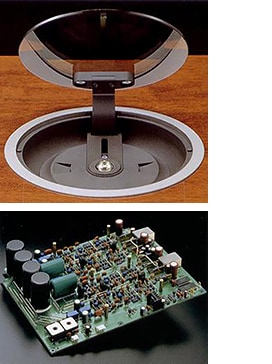
cerrar

